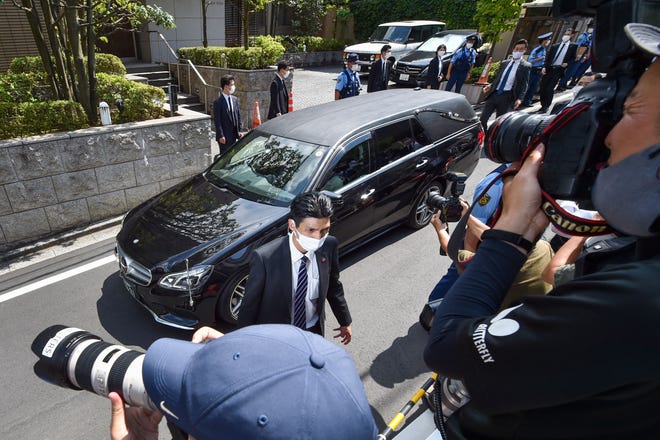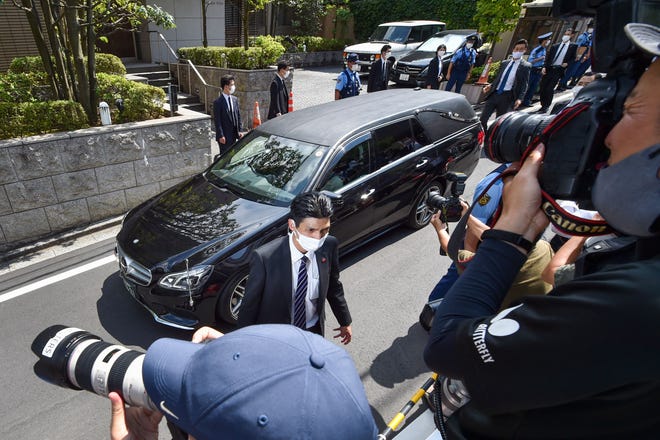TOKYO — The body of Japan’s former Prime Minister Shinzo Abe was returned to Tokyo on Saturday after he was fatally shot during a campaign speech in western Japan a day earlier.
Abe was attacked in the city of Nara and airlifted to a local hospital but died of blood loss despite emergency treatment including massive blood transfusions. Police arrested the attacker, a former member of Japan’s navy, at the scene on suspicion of murder. Police confiscated the homemade gun he used, and several others were later found at his apartment.
Timeline:How the assassination of Japan’s Shinzo Abe unfolded
‘Stunned, outraged and deeply saddened’:Biden, other leaders react to Shinzo Abe assassination
A black hearse carrying Abe’s body and accompanied by his wife, Akie, arrived at his home in Tokyo’s upscale residential area of Shibuya, where many mourners waited and lowered their heads as the vehicle passed.

Abe’s assassination ahead of Sunday’s parliamentary election shocked the nation as a threat to democracy and raised questions over whether security for the former prime minister was adequate.
Even though he was out of office, Abe was still highly influential in the governing Liberal Democratic Party and headed its largest faction, but his ultra-nationalist views made him a divisive figure to many.
When he resigned as prime minister, Abe blamed a recurrence of the ulcerative colitis he’d had since he was a teenager. He said then it was difficult to leave many of his goals unfinished,…



























































